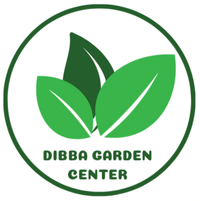Fittonia
Aed 14.00
Colour
In stock
1
Product Details
Fittonia's dramatic wilting when thirsty makes it a great communicator—perfect for learning plant care cues! Keep it happy with consistent moisture and humidity. 🌿💧
Fittonia (Nerve Plant) Care Guide
Light Requirements:
- Bright, Indirect Light: Thrives in medium to bright indirect light. Avoid direct sunlight, which can scorch the leaves. Suitable for north or east-facing windows or shaded areas in brighter rooms.
Watering:
- Consistently Moist Soil: Keep the soil evenly moist but not waterlogged. Water when the top layer of soil feels slightly dry. Wilting is a sign of thirst; water promptly to revive.
- Avoid Overwatering: Ensure proper drainage to prevent root rot. Use pots with drainage holes.
Humidity:
- High Humidity (60-70%): Prefers humid environments. Mist regularly, use a pebble tray, or place near a humidifier. Ideal for bathrooms or terrariums.
Temperature:
- Warmth (65-80°F / 18-27°C): Protect from drafts and sudden temperature changes. Avoid temperatures below 55°F (13°C).
Soil:
- Well-Draining Mix: Use a peat-based potting mix with perlite or orchid bark to retain moisture while ensuring drainage.
Fertilization:
- Balanced Liquid Fertilizer: Feed monthly during spring and summer at half strength. Avoid over-fertilizing to prevent leaf burn.
Propagation:
- Stem Cuttings: Take cuttings in spring/summer. Root in water or moist soil, maintaining high humidity by covering with plastic.
Common Issues:
- Yellow Leaves: Overwatering or poor drainage.
- Crispy Edges: Low humidity or underwatering.
- Pests: Watch for mealybugs and spider mites. Treat with insecticidal soap.
Pruning:
- Pinch Back Tips: Encourages bushier growth. Remove leggy stems to maintain shape.
Toxicity:
- Non-Toxic: Generally safe for pets and humans, though ingestion may cause mild discomfort.
Repotting:
- Every 1-2 Years: Refresh soil or move to a slightly larger pot if root-bound. Spring is ideal.
Save this product for later
Fittonia
Display prices in:AED

